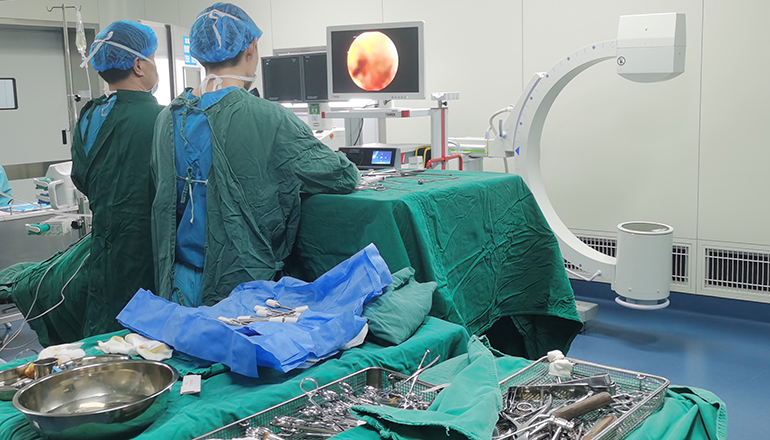- Shanghai, China
- [email protected]
- +86-21-58189111
UBE (Universal Endoscopic Spine system) spinal endoscopic surgery is a minimally invasive surgical procedure used to treat various spinal conditions. This technique involves the use of an endoscope, which is a thin, flexible tube with a camera and light source attached to it, to visualize and operate on the spine. In this surgery, the surgeon uses a primary mirror to reflect the image captured by the endoscope onto a video screen.
The primary mirror used in UBE spinal endoscopic surgery can be set at different angles to provide different viewing perspectives. The two most commonly used angles are 0 degrees and 30 degrees.
A primary mirror set at a 0-degree angle provides a direct view of the endoscope’s field of view. This angle is most useful when the surgeon wants to view the spine straight ahead, in a linear fashion. This angle is also useful when the surgeon needs to perform procedures that require a straight-on view of the target area, such as removing disc fragments or bone spurs.
On the other hand, a primary mirror set at a 30-degree angle provides a different viewing perspective. This angle allows the surgeon to see the spine at an angle, which can be useful when operating in tight spaces or when working around curves in the spine. The 30-degree angle also provides a wider field of view, allowing the surgeon to see more of the target area.

The choice of viewing angle depends on the specific surgical procedure being performed and the surgeon's preference. Some surgeons may prefer to use a combination of both angles during a procedure to get a more comprehensive view of the target area.
In addition to the primary mirror angle, other factors that can affect the quality of the image captured by the endoscope include the quality of the endoscope itself, the lighting in the operating room, and the skill and experience of the surgeon.
The 0-degree and 30-degree primary mirrors used in UBE spinal endoscopic surgery provide unique advantages that can help the surgeon achieve better outcomes for their patients. The 0-degree mirror allows for direct visualization of the surgical site, which can be particularly helpful when performing procedures that require a straight-on view. The 30-degree mirror, on the other hand, provides a wider field of view and a better view of curved structures.
It's worth noting that while the primary mirror angle is an essential factor in achieving a good view of the surgical site, it's not the only one. Other factors, such as the quality of the endoscope and the lighting in the operating room, also play a critical role in ensuring a clear view of the surgical site.
In conclusion, the use of different primary mirror angles in UBE spinal endoscopic surgery is a useful tool for the surgeon to achieve optimal visualization of the surgical site. The surgeon's experience and skill, along with the quality of the endoscope and the operating room lighting, also contribute to the success of the procedure. By using a combination of these factors, surgeons can provide their patients with safe, effective, and minimally invasive spinal surgery.
Leave a Comments